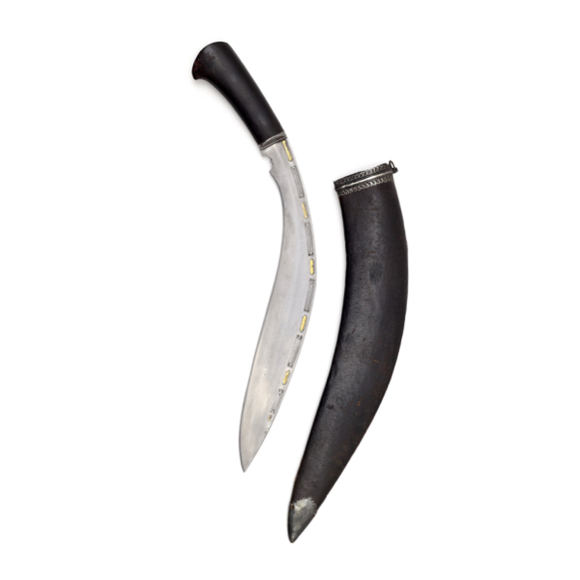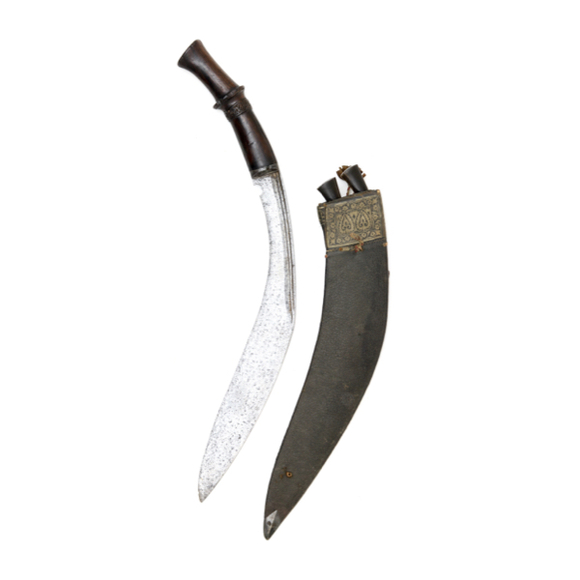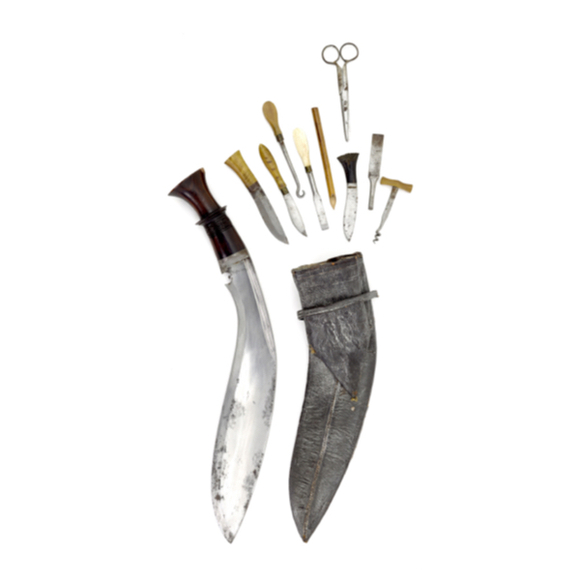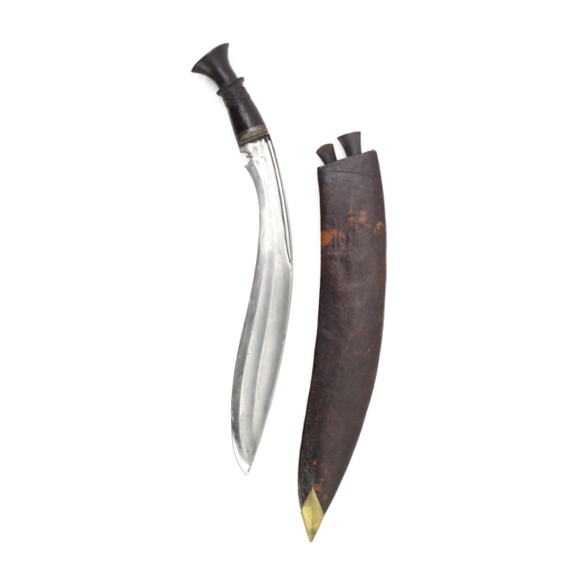Russet iron, one-piece construction with decorative grooves.

111 cm
Blade 79 cm
Tip to gauntlet 85 cm
Base 7 mm
Ahead of langet 4 mm
Middle 3 mm
Tip 1.5 mm
Base 30 mm
Ahead of langet 23 mm
Middle 21 mm
Tip 14 mm
1257 grams
At gauntlet / blade junction
India
Steel, iron, brass, leather, velvet, wood
Probably 18th or 19th century
An interesting Indian patá of a small size, probably for a boy.
Blade
It has a long, springy blade. Single-edged for most of its length, with a double-edged tip. The blade has a wide center groove with a narrow groove above that. The spine is ridged. The blade is unmarked, or the markings hidden, but it is almost surely a European riding sword that was imported into India, as many were. The blade is held between two long iron langets, that are in turn held by the brass mouth of the gauntlet.
Hilt
The gauntlet is fully formed of brass, its centerpiece being a feline head that covers the wielder's fist. The lower arm protection is decorated with geometric designs in relief. It has several loops that could be used to attach pieces of iron that would produce sound when the piece was swung.1 The tiger-like head has nice sculptural features and is even outfitted with two sharply pointed ears.
The inside of the gauntlet still retains its original padding made of leather and dark brown silk-velvet. The bar grip is made of wood with an iron core, riveted to the walls of the gauntlet. There is also an extra iron loop for retaining the arm.
Scabbard
The piece comes with its original wooden scabbard, covered with dark blue silk velvet and decorated with bands of gold wire. While it is nice to have the scabbard present, it is in very poor condition.
Attribution
Indian patá like these are mainly associated with the Marathas that originally inhabited south and central India. They founded the Maratha Empire in 1674 and ruled much of India until their empire fell in 1818.
Egerton illustrates a piece, different in style but also with a feline head on the gauntlet. It is described as being from Oudh, central north India.2
Another example is illustrated by Hales. The shape is very similar to ours, but his example was silver plated.3

Portrait of Shivaji Bhonsle I, founder of the Maratha Empire. (1627/30 - 1680)
Notice the zoomorphic gauntlet sword in his right hand.
British Museum collection.
The size of this example is rather small, indicating it was probably meant for a young teenager and not a grown man. In many warrior cultures training began at a very young age already. This is probably a weapon, made to prepare a young boy for a future life as a warrior or perhaps a martial artist doing the shows the Marathas were known for.
Conclusion
A nice and example of a boy's patá, a pretty rare find in itself. With its bold sculptural gauntlet, with attention to detail like the little ears, this piece has substance and character.
A very charming piece that I am personally quite fond of.
Notes
1. See an example with those pieces still attached on vikingsword.com.
2. Lord Egerton of Tatton; Indian and Oriental Arms and Armour. Dover Publications; Revised edition, 2002. Page 110 and 130.
3. Robert Hales, Islamic and Oriental Arms and Armour: A Lifetime's Passion, England, 2013.



























With a very fine Nepalese blade, but kard-like hilt and scabbard.
Early type with very shallow notch in the blade and little flare in the pommel.
20th century military khukurī with many different tools in its back pocket.






